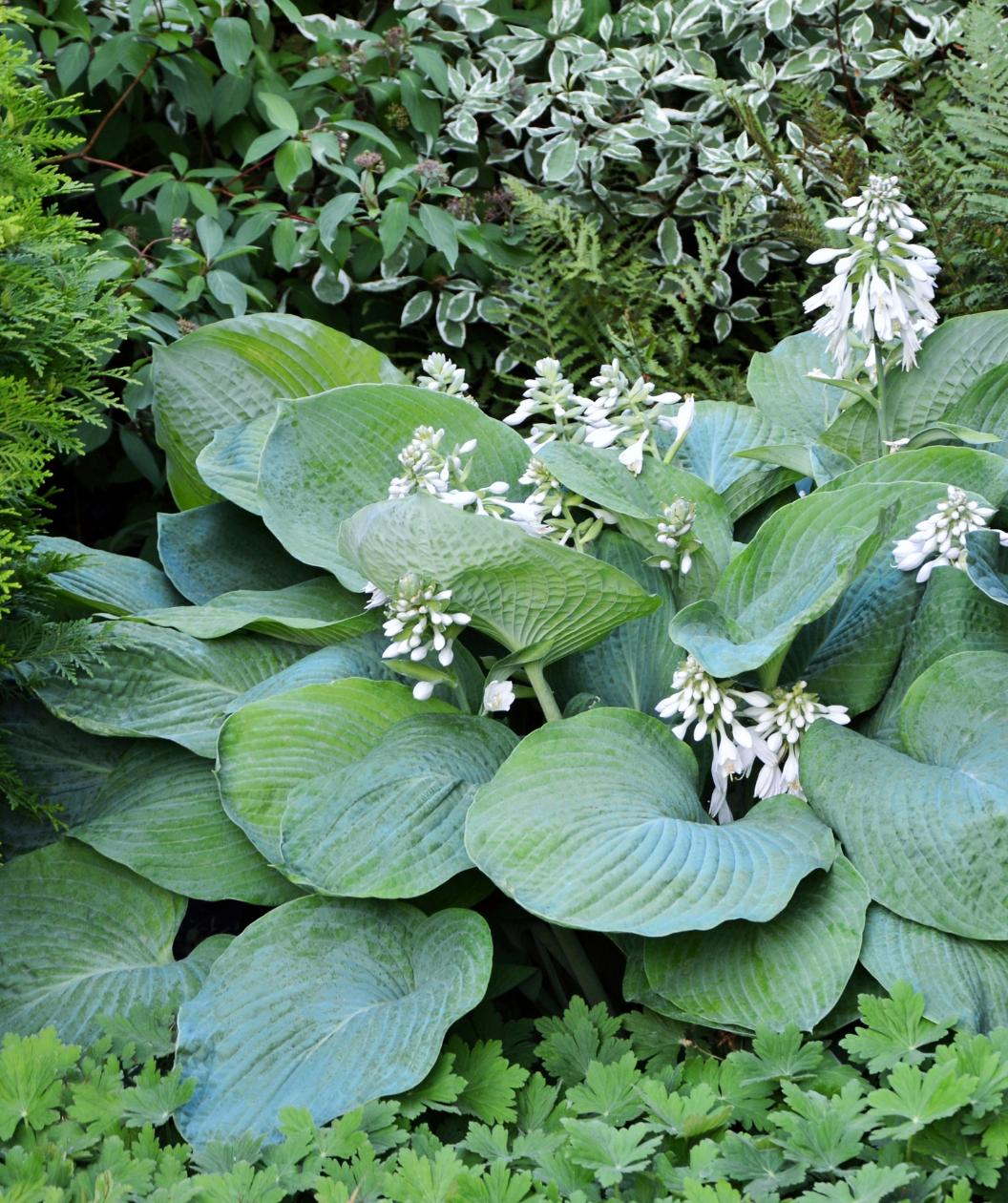


LARGE, CELESTIAL BLUE LEAVES AND LAVENDER FLOWERS
FEATURES:
- Big, blueish-grey leaves emerge in spring as a welcome sign to spring
- In mid-summer, tall stems appear, producing light lavender to white blooms
- The trumpet-shaped flowers attract butterflies and hummingbirds
- Due to its thick, waxy foliage, the Blue Angel is largely slug-proof
- Ideal in cottage gardens, as a border planting or in a shady Zen garden, where the calming effects of the blue hues will shine
- Hand Selected, Fresh from the Grower
- Ships in a plant-safe designed box
Growth Facts
- Hardiness Zone: 4 - 8
- Mature Height: 2-3' tall
- Mature Width: 3-4' wide
- Exposure: Sun/Shade
- Spacing: 3-4' apart
LARGE, CELESTIAL BLUE LEAVES AND LAVENDER FLOWERS
FEATURES:
- Big, blueish-grey leaves emerge in spring as a welcome sign to spring
- In mid-summer, tall stems appear, producing light lavender to white blooms
- The trumpet-shaped flowers attract butterflies and hummingbirds
- Due to its thick, waxy foliage, the Blue Angel is largely slug-proof
- Ideal in cottage gardens, as a border planting or in a shady Zen garden, where the calming effects of the blue hues will shine
- Hand Selected, Fresh from the Grower
- Ships in a plant-safe designed box
Growth Facts
- Hardiness Zone: 4 - 8
- Mature Height: 2-3' tall
- Mature Width: 3-4' wide
- Exposure: Sun/Shade
- Spacing: 3-4' apart
Why plant Blue Angel Hosta?
A sublime Spirit that has become the standard in blue Hostas! Blue Angel Hosta will grace your garden with a profusion of celestial-blue foliage, imparting a lush look to the shady spaces in your landscape. In time, it makes a generous mound of large leaves and will become a defining focal point. Flowers impress, too! The flowers on many Hostas don’t garner a lot of attention, but Blue Angel’s blossoms are lovely. Palest lavender, nearly white, they rise above the massive leaves in summer and circle the stems in big bunches. Hummingbirds adore them. Pure heaven.
Hostas are native to Japan, China, and Korea, but they have many passionate fans around the world. Over the years, plant breeders (along with some home gardeners) have introduced new Hosta selections whenever they’ve found a plant with unique traits. Blue Angel Hosta has been around since at least the early 1970s. It was bred by a passionate New York plantswoman named Florence Shaw. In 1986, another Hosta breeder named Paul Aden registered the plant with the American Hosta Society, and that’s when it become much more widely known. Many gardeners came to prefer Blue Angel over the previous standard blue Hosta, Elegans, because of its faster growth rate and its outstanding performance in the landscape.
How to use Blue Angel Hosta in the landscape?
Hostas are simple to grow, but one challenge Hosta growers do face is slugs. Slugs love these succulent Spirits. Because Blue Angel Hosta has such thick, waxy foliage, however, it is largely slug-proof! They tend to shun it and go elsewhere in search of easier meals.
Planting Zones
Hardiness Zone: 4-8
How To Plant Blue Angel Hosta
Hostas love shade, and Blue Angel is no exception. A bit of gentle morning sun, however, will help to bring out the bluest tones. Water regularly. This Hosta does possess some drought tolerance when established, but it will appear lushest with plenty of H2O. Avoid overhead irrigation if possible, which washes off the blue coating. Plants will become blue-green in rainy climates. In deer-prone areas, treat with Plantskydd® to prevent grazing. Foliage will die back with the first frosts and can be cut back then. If you wish to dig and divide Blue Angel, you can do it at any time, but late winter/early spring is best.
How To Water
Water twice weekly for the first 3-5 weeks; then water weekly for the remainder of the year until winter. When you water, water slowly and thoroughly. Watering needs may be altered due to extreme weather conditions.
How To Fertilize
Incorporate Elements Starter Plant food granular form into the soil when planting. If planting in spring or summer start fertilizing late fall using Elements Starter Plant food granular form on an annual basis each late year. Continue this for three years to get your plant well established.
How To Prune
Each fall, just before winter sets in clean up the previous years foliage and compost it. Be sure your perennials are mulched well for winter protection. Two inches of an organic mulch will do the job. Consider leaving the plant debris in place through the winter and doing your clean up on the weather warms in the spring. While it doesn't make things neat and tidy, the debris provides overwintering protection for insects, their eggs and pupae including our native Viceroy butterfly.




